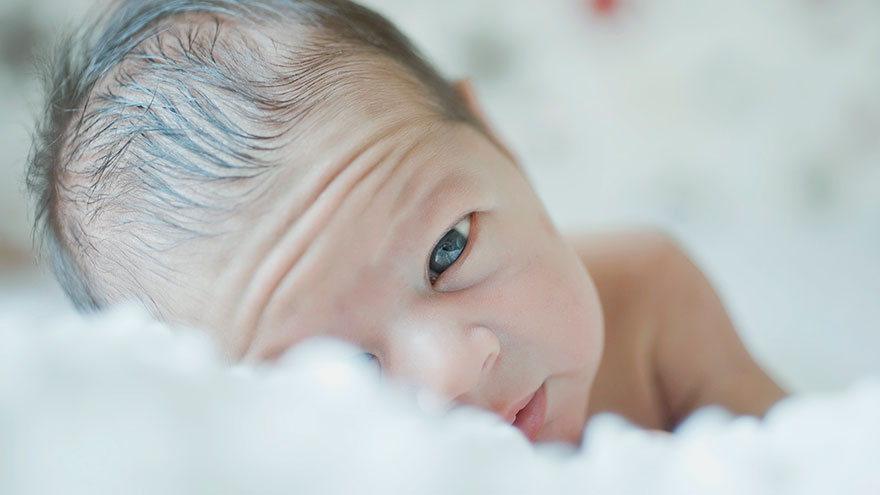How to Stimulate a Newborn’s Sense of Sight
Newborn sight needs to develop during a baby’s first year, and your child develops sight from sensing light and dark to identifying a color after several weeks of life.
Visual variety keeps your new baby interested in making sense of the visuals, but it’s an easy job to give your child appropriate eye candy. Everything is new to newborns, and your baby finds some of the sights you take for granted highly interesting.
Allow your child time to see her environment, but change one or two of the visual features, such as crib displays or toys, every few days to keep interest at a high level.
Things You’ll Need
- High-contrast colored toys
- Baby mobiles
- Infant mirror
- High-contrast sight cards
6 Steps to Stimulate a Newborn’s Sense of Sight

1. Create a home nbursery environment that promotes sight stimulation.
With walls painted in soothing pastel hues and accessories featuring bright, contrasting colors. Central Florida’s Health First hospital system recommends decorating with small photos so your newborn has visual reminders to help him learn to recognize family members.
2. Select toys with a lot of eye interest for your newborn.
Studies done by the Smith-Kettlewell Eye Research Institute show that infants in the first month of life have the ability to see the largest “E” on a standard eye chart, a visual acuity rating of approximately 20/120. That means newborns need toys with large details.
Your newborn’s sight approximates normal adult vision at 8 months, according to the institute. Bausch and Lomb eye specialists claim newborns several weeks old see red as a first color, so select soft toys in red as her first toy.
3. Move in close to your newborn’s face when talking to him.
The American Academy of Pediatrics recommends regular tummy-to-tummy time during the day to stimulate your newborn’s sense of sight. Place your baby tummy down on your stomach so he can look to the side without moving his head. Give him eye stimulation during this time by showing him toys or moving your fingers.
4. Install colorful mobiles over your child’s crib.
And playpen and position the moving parts so your child sees a new view every week to add interest. Move the mobile close enough to see, but far enough away so that she can’t reach the moving parts.
5. Attach an infant-safe mirror at baby’s eye level near the crib so he can watch his facial expressions and movements.
Select toys and stuffed animals that feature small mirrors as well, so your newborn can see his image reflected.
6. Use high-contrast picture cards showing black-an+d-white drawings of shapes and patterns.
Picture cards feature shapes printed in black and white and in high-contrast colors. Developmental child psychologist Dr. Penelope Leach writes on the BabyCenter website that visual stimulation and interaction using stimulating toys, such as picture cards, help your baby’s brain develop, as well as helping your newborn focus visually on the world around her.
Talk to your newborn while moving your face in close to him. KidsHealth suggests that this combined action helps him mentally link your image to your voice.
You Might Also Like :: How to Help Dad Bond with a Newborn

